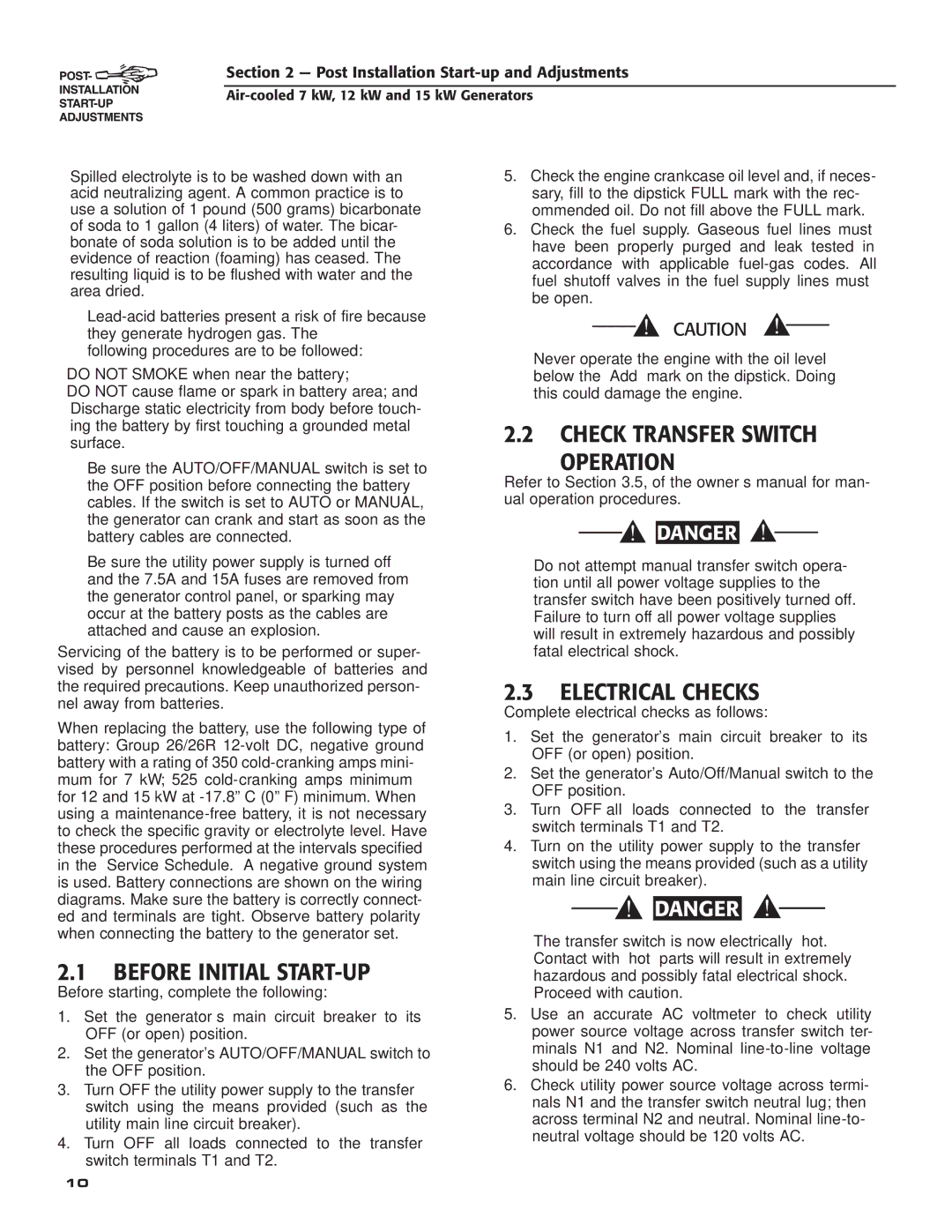04389-3, 04456-3, 04390-3 specifications
Generac Power Systems has established itself as a leading name in power generation equipment, and models 04389-3, 04456-3, and 04390-3 exemplify the company’s commitment to reliability and technology. These models are particularly popular among homeowners and businesses that need dependable backup power solutions.The Generac 04389-3 is a 22 kW standby generator designed to provide seamless power during outages. It boasts a powerful 999cc engine that can handle heavy loads, making it suitable for larger homes or commercial settings. The generator features Generac’s patented True Power Technology, which ensures clean and stable power delivery, making it safe for sensitive electronics. It also comes equipped with an innovative shutdown system that prevents damage during low oil conditions and features a five-year limited warranty for added peace of mind.
Similarly, the 04456-3 model also serves as a robust standby generator, offering 24 kW of power output. This model highlights an advanced alternator that provides a reliable source of energy for running essential appliances like refrigerators, air conditioners, and heating systems. The 04456-3 includes an automatic exercise mode, allowing it to run tests periodically to ensure it’s always ready to operate when needed. Additionally, it utilizes a user-friendly digital controller that simplifies monitoring and operational management.
The Generac 04390-3 model offers a slightly lower output at 20 kW but retains high efficiency and reliability. Like its counterparts, it features an innovative design that operates quietly while delivering consistent power. This model is particularly aimed at residential users who require dependable backup solutions without the noise commonly associated with generators. It incorporates Generac’s Smart Management modules, enabling users to manage power loads effectively and avoid overloading the system.
All three models benefit from Generac’s Mobile Link technology, which enables remote monitoring via mobile devices. This feature allows users to check the status of their generators, including maintenance alerts and operational history, providing a convenient way to manage energy needs. In summary, Generac models 04389-3, 04456-3, and 04390-3 offer cutting-edge features, dependable technology, and robust capabilities, making them an ideal choice for anyone seeking reliable backup power solutions.

